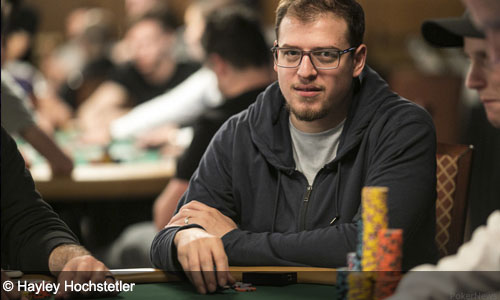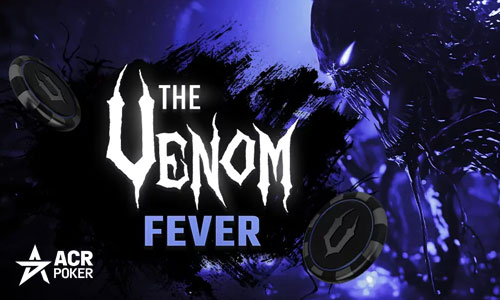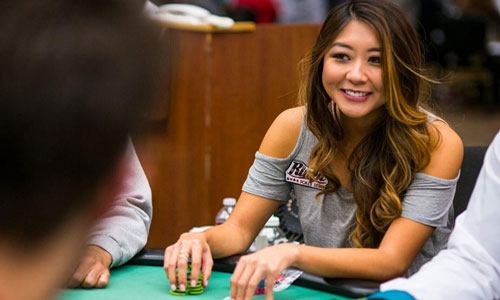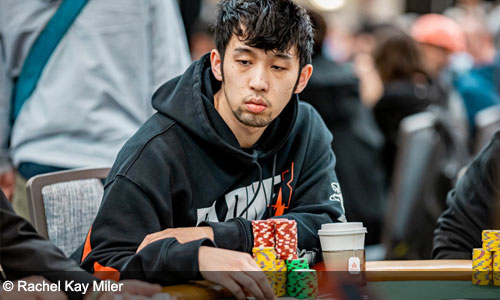Master the Art of Bluffing — Tips to Help You Bluff Successfully

Every player knows that a good poker hand can only take you so far — you have to implement the correct strategy, get to know your opponents, and, more often than not, know when to bluff.
Mastering the art of bluffing requires a lot of practice, patience, and learning.
To some, bluffs might come naturally, while others may need to make more of an effort. If you’re a beginner, the word “bluff” might scare you into playing safe poker, but in the world of gambling, that won’t bring you any profit. Therefore, if you watch a few poker tournaments, you’ll notice that experienced and professional players use every opportunity to lock in a win.
So, if you’re ready to take risks that will eventually pay off, keep reading and write down the tips that will help you get the hang of bluffing.
Most Popular Bluffs
To newbies, all poker bluffs look the same. However, a keen eye will detect the different types of bluffs players resort to. Essentially, bluffing means hoping your opponent will fold a hand better than yours.
So, how do you convince your opponent to do that? You choose one of the four main types of bluffs:
- Continuation bet bluff — Continuation bets are made after the flop, with you having the initiative. The goal is for your opponent not to connect with the board.
- Semi-bluff — If you believe you have a chance of making a strong hand, but your current hand is weak, you go for a semi-bluff and make straight draws or flush draws.
- Stone-cold bluff — In reality, not many players resort to stone-cold bluffs. Here’s why — if it’s next to impossible to improve your existing hand, you can only rely on fold equity to acquire some profit. Since this is one of the riskiest moves, even experienced players try to avoid it.
- Opportunistic bluff — If you notice that other players aren’t interested in the pot, this is your chance to make the opportunistic bluff. This bet will work only if none of your opponents have a strong hand.
Best Poker Bluffing Tips
Before I jump to the most important tips, I’d like to point out one thing — what you’ve seen in movies isn’t the reality. Various poker scenes displayed in Hollywood movies show that big bluffs are the only way to make a profit, which isn’t true, especially if you’re a beginner. So, don’t jump at every opportunity to bluff — you will lose more often than you win.
Now, it’s time to show you some useful tips and tricks that will help you wrap your head around the art of bluffing.
# Don’t Bluff Too Often
A useful tip for beginners — avoid bluffing every chance you get. Poker isn’t made entirely of bluffing; it’s just a small aspect of a larger game. Some poker experts might even tell you that the only way to be a successful real money poker player is to not bluff at all. However, if you find this strategy useful — stick to it and work on it.
Knowing when to bluff is a huge part of the strategy. Make the wrong choice, and you’re out. Also, if you haven’t bluffed in a while during a game, don’t do it just because you believe you should — always bluff because you’ve thought it through, and you’ve concluded it’s the only way to win.
# Beginners — Bluff When the Stakes Are Low
Bluffing tempts a lot of inexperienced players and leads them to believe they can always win big. However, don’t get carried away if you’re not 100% certain it will work. I believe bluffing is more effective when the stakes are low, at least for newbies. This allows you to make your opponent fold, but it also helps you lose less if they call your bluff.
Moreover, you will seem more confident and professional if you place smaller bets. New poker players tend to jump at the first opportunity of making a profit — you want to avoid that at all costs.
# Bluff Pre-Flop
During the game, if you’re holding the last position and all the opponents on your left seem to have good hands, it’s time to begin bluffing. You should put in a raise to stir up the game and pressure other players — that usually leads to someone folding before the flop.
If you bluff pre-flop, you will give yourself an advantage — you can see how other players react to the raise. It will also give you more than enough time to adapt your strategy, if necessary, and make the required changes to your gameplay before the end of the hand.
# Work on Bluffing One Player at a Time
Before I learned the ins and outs of bluffing, I experimented a little by bluffing more than one player and seeing what their reactions would be like. Suffice to say — it didn’t pay off. Trying to get more players to fold is a tall order, and if you’re an amateur player, it’s not even worth trying.
Therefore, if your hand requires a bluff, focus on one player. Moreover, if there are more players at your table, someone is likely to call your bluff, and you’ll lose everything.
# Keep Your Tells Under Control
When you’re bluffing, you’re essentially lying to the other players and trying to trick them into folding. That’s why you should be aware of your tells — if you notice your behavior changes in a particular way when you’re lying (or bluffing), you need to be mindful of that and have it under control.
For example, if you were socializing with other players and then froze and quieted down, that would be an obvious tell, and the other players will definitely notice it. So, relax and move in the same way you have throughout the game.
# Stay Calm or Learn to Appear Calm
This is an expansion of the previous tip. If you’re going to bluff, it must seem natural — you need to relax, be calm, and not make any rash or out-of-character decisions. Calling bets instead of raising them, betting too quickly, or avoiding eye contact will show your agitation and become visible to other players.
In case staying calm isn’t an option, just try to fly under the radar — the other players might be too focused on their hands or bluffs to notice yours.
# If the Other Player Isn’t Convinced — Quit Bluffing
Bluffing doesn’t require you to see it all the way through. The only time you should even begin to bluff is if you’re confident you can convince the other player to fold. If your opponent seems suspicious, get out — it’s not worth losing your money.
In Conclusion
The art of deception has been around for ages, and it’s become an essential part of poker. While it can be handy, it’s important to remember that bluffing isn’t the only way to win. Therefore, stack up on books, movies, videos, and other learning materials, and start studying.
Another thing I found beneficial in learning poker is the variety of online poker sites and apps. They helped me practice different strategies and put my poker skills to the test. You should try them out!
Hi, I am the Chief Editor of top10pokersites.net, this site is dedicated to all thing poker. I have been working around the poker industry for the last 15 years, with different brands. The main purpose of this site is to keep you uptodate with the industry and offer you the best deals around.











Good article, it’s probably not wise to bluff much at the low levels as most fish can’t fold bottom pair unless you have a read on them.
Ho ho ho 🙂 🙂 🙂 Goooooood!